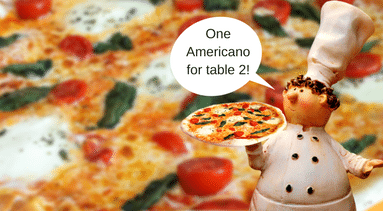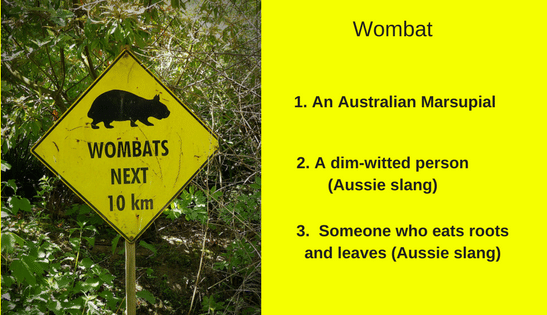It’s a common challenge. The content team at US headquarters pumps out volumes of great content, and the US or global marketing director doesn’t understand why you want to engage an Australian content marketing agency to create localised content.
Can’t you just tweak it?
Maybe, you reply cautiously.
Some pieces of content can be easily touched up for an Australian audience. Other pieces will have so many issues you don’t know where to begin – or how to explain the problem to someone who might not understand how delightfully different we are Down Under. Aside from the Australian English versus American English issue, there are other factors that come into play, like differences in buyer motivation, cultural attitudes and the suitability of examples used in American content.
Here’s a handy guide to help you identify the issues involved, or perhaps to more easily explain the scale of the content localisation problem to US HQ!
How are we different?

Let us count the ways:
Spelling – American English vs Australian English
Back in the 18th century, English spelling was somewhat inconsistent. Two influential chaps decided to put an end to that, and each published a dictionary. Unfortunately, they were different. The English began to favour one dictionary, but Americans favored the other, so now we have inconsistency on a global scale. Australia followed the English, as we often do.
A few examples:
OUR (AU) versus OR (US):
Our Aussie humour can be a little colourful. We’re sure American humor can be colorful too, even if we don’t find all of it funny.
ISE (AU) versus IZE (US):
That wouldn’t stop Australians from organising a night out to see a visiting US comedian like Seinfeld, who organized an Australian tour in 2017.
TRE (AU) versus TER (US):
Although Jerry might suffer some confusion if ever asked to perform in an Australian theatre in the centre of town (often referred to here as the CBD). He’d be looking for the theater in the center of town instead.
C versus S, sometimes
Should Jerry decide to move here and have a career change to lawyer or private investigator, he’d need a licence to practise, not a license to practice.
He’d also need a driver’s licence, and possibly a little practise to avoid collisions – because in Australia, it’s our practice to drive on the left side of the road.
Terminology
Industry-specific terminology can vary significantly between Australia and America (engineering is a prime example), but so too can many everyday words and concepts.
We go to university, Americans go to college. We have colleges too – they’re just not the same as universities. We go to the chemist or pharmacy, Americans go to the drug store. We have lawyers, not attorneys, mobiles instead of cell phones, and verandahs, balconies and patios instead of porches. We use shopping trolleys not carts, have postcodes instead of zip codes, and take out the rubbish, not the trash.
Need a coffee? Would you like short black, long black, flat white or cappuccino? Americanos aren’t on the menu here. Well, that’s not entirely true. They are on some menus, but if you order one you’re more likely to be served pizza than coffee.

With so many differences, an Australian audience can quickly recognise content created for an American audience, and may begin to think twice about its relevance.
Colloquial language
Colloquialisms can slip into conversational style copy no matter how hard copywriters try to avoid it. A term can be so familiar to a US writer that he or she doesn’t realise it’s only common in the US. The difference in meaning can be substantial.
For example, you wouldn’t want to mention ‘rooting for your team’ to an Australian audience. Or recommend getting a ‘fanny pack’. (We’ll leave our American readers to research the reason!)

Using examples
Examples used in US-created content frequently need to be changed to resonate with an Australian audience.
Don Bradman is our Babe Ruth. Yes, we do know what Costco is, but only just. Starbucks has also opened outlets in Australia. However, only a small percentage of Australians have engaged with those brands, not everyone has heard of them, and we tend to view them as very American. They’re not yet part of our culture.
When it comes to giving examples, it’s better to choose one that’s culturally familiar to your audience. Naming American brands or icons in content destined for the Australian market can make it feel less relevant.
Of course, there are times when it’s appropriate to mention a US brand, event or destination, despite the readers’ location. If it’s relevant and cannot be replaced by an Australian equivalent, there’s usually no issue with leaving it in.
The simple test question is this: Is there an Australian example that would be more familiar or relevant to the readers, and just as appropriate to use in this context?
Cultural and social differences
Broadly speaking, our attitudes towards everything from welfare to gun control are different here, and we’re not nearly as patriotic as Americans. We look at the world through a different lens, created by a different history.
While cultural and social factors are rarely significant on their own in business content, they can seep through by way of the writers assuming that readers’ attitudes will match an American sentiment. As a result, analogies, tone or terms used to refer to a situation can be either meaningless, or at the other end of the scale, offensive – all because our underlying cultural attitude to a subject or situation is different.
Seasons
The most likely seasonal issue with American content is the timing. Content ripe for publishing in the US might be ill-timed for Australia if it references the season, the weather, or seasonal traditions. But there are language differences too.
The American summer is our winter. We have autumn not fall. We don’t have a white Christmas in our cities. In fact, there are very few locations in Australia where snow falls at all. We have cyclones, not hurricanes. Even our temperature measurement system is different – when it’s 100 degrees Fahrenheit it’s 38 degrees Celsius here.
Holidays and celebrations
We don’t do Independence Day, Thanksgiving, or Spring Break. Younger generations have warmed to Halloween in recent years, but participation is very limited compared to the US. Valentines Day – sure, who doesn’t like flowers and chocolates. But we don’t like to get too serious about it – we’re Australians.
Here we have Anzac Day, Australia Day, a four-day long weekend for Easter, Labour Day (as opposed to Labor Day), the Queen’s birthday, and a few others.
We’re very partial to a long weekend, and many of us also enjoy a lengthy Christmas break because some businesses (other than retailers and restaurants) close their doors from December 24 to the first week of the New Year. Or the second or third week in an increasing number of cases! We do love a good holiday.

Measurements
Miles, yards, inches, pounds and ounces went out in the 1960s. They’re so imperial. In Australia, we talk kilometres, metres, centimetres, kilograms and grams. We don’t like to be seen as imperial or colonial, even if we do get a day off for the Queen’s birthday.
Our clothing and footwear sizes are different too, and as we mentioned above, we measure our temperature in degrees Celsius.
Challenges & buyer motivation
Perhaps the least understood issue, and the most difficult to spot, lies in the challenges Australians face, and our motivations when it comes to buying a product or service. Some products and services simply don’t resonate with Australians when you describe the benefits as you would to an American audience. That can be because the challenge the product or service is designed to alleviate either doesn’t exist here, or is substantially different.
Example: a while back we were tasked with localising marketing content for an overseas company. One of the main selling points in other markets related to a savings style plan for customers, which helped create long-term customer loyalty, and brought in cash in advance of services being supplied. For customers, it offered an opportunity to set funds aside, and be assured of access to the service when needed.
However, the services in question are less expensive here, and government subsidised services are also available. That meant there was significantly less incentive here for people to opt into such a plan and pay in advance.
With the most attractive selling point in the overseas market falling flat here, a revised approach highlighting other benefits and services was needed.
Industry evolution stage
A similar factor is that any given industry isn’t always at the same stage of evolution in Australia as it is in America, which means that the thinking of leaders in those industries, and their readiness to change approach or take up new technology, for example, can be quite different. Where an industry is younger, or simply not as competitive in Australia as it is in the US, the motivation may not be as strong. There can also be a greater need for content that educates the market in the early stages, to ensure potental buyers understand the benefits.
This scenario can also translate to a longer sales timeframe, as potential clients can require much more information before making a purchasing decision.
Case studies and thought leadership content
If you’re a B2b brand that creates case studies and thought leadership level content, consider engaging Ausralian copywriters to:
- localise articles and white papers to incorporate Australian data, statistics, and examples;
- create new case studies based Australian projects;
Gather local testimonials at the first opportunity too – if there’s no trust established in the region, it will be much harder for your sales team to connect with prospective clients and have the right conversations.
Should you localise or create new local content?
A little of both, if you can.
There will always be some US content that can be easily adapted for an Australian market. When your US team has a mass of resources at your disposal, you’ll want to take every possible advantage of that.
With the above factors in mind, read through any material you’d like to use and think about your local market. Will a few tweaks localise the article or eBook well enough, or is the approach wrong for the Australian audience? If the angle or approach is out, fresh content created by Australian writers will be the way to go.
As you probably realise, there’s a definite advantage in creating entire campaigns with the Australian market 100% in mind. When you do, everything from the thinking behind the campaign to the writing will be in tune with the Australian readers – and when content resonates well with prospects, it tends to generate more leads.
I hope you’ve found this helpful. If you do have US content to localise, or you’re considering engaging a web content writer in Australia to produce fresh local content, content marketing agency Article Writers Australia (Sydney) would love to hear from you! Visit our contact page to email, call, or directly book an online meeting.
Leonie Seysan is the Director of Article Writers Australia, and manages the team of professional writers and editors. She holds a Bachelor of Communications Degree (Media Studies) and has been writing professionally for over 15 years. Leonie is also the podcast host of "Content with Humans" and author of "Turning Insight to Influence: A Guide to Building a Thought Leadership Program".






